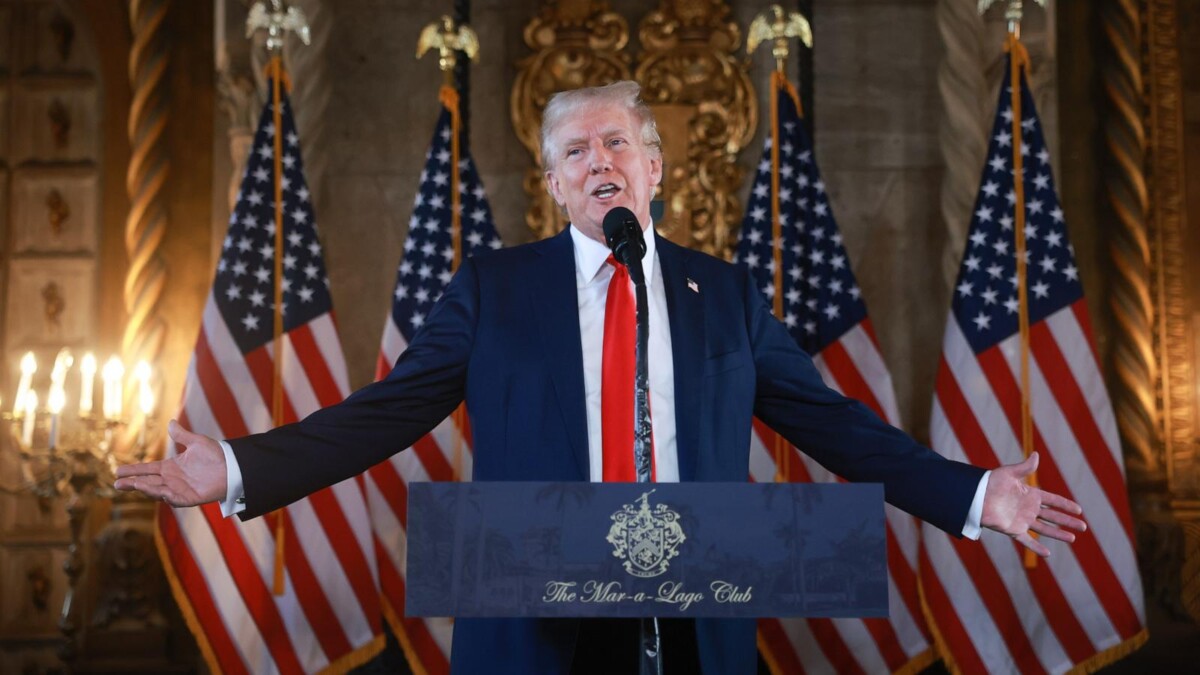During a campaign stop on Long Island Wednesday night, former President Donald Trump suggested capping annual credit card interest rates at a maximum of 10%. This proposal led banking groups to push back, calling it the Republican version of Democrat Kamala Harris’ heavily criticized “price controls.”
“While working Americans catch up, we’re going to implement a temporary cap on credit card interest rates,” Trump told a lively crowd of about 16,000 at the Nassau Coliseum as he outlined his economic agenda. “We’re going to limit it to around 10%. We can’t allow them to charge 25 or 30%.”

As of May, the average credit card interest rate stood at 21.5%, according to data from the Federal Reserve. Rates had risen sharply starting in early 2022, fueled by rampant inflation in the wake of the COVID-19 pandemic.
Interestingly, credit card interest rates have never fallen to 10% in the Fed’s recorded data.
“A government-imposed cap on credit card interest rates would negatively impact all cardholders, particularly low-income Americans whom these measures aim to assist,” a banking industry insider from the Consumer Banking Association told The Post on Thursday. “This would mean credit cards would only be available to consumers with high incomes and strong credit scores, who pose little risk to issuers.”
Peter Schiff, chief economist at Euro Pacific Asset Management, criticized Trump’s proposal, asserting that it represented a form of price control. “This would devastate the industry, leading to millions of Americans losing their credit cards,” he said. “The industry relies on higher interest rates to mitigate losses from defaults and fraud.”

Trump and his supporters previously criticized Harris for her plan to combat alleged price gouging in the food sector. The 45th president labeled her as a “Marxist” and claimed her proposal was essentially “communist” in nature.
In 2019, several politicians, including Sen. Bernie Sanders (I-Vt.) and Rep. Alexandria Ocasio-Cortez (D-NY), supported a measure to cap credit card interest rates at 15%.
“We have opposed similar interest rate cap proposals in the past,” stated a spokesperson for the American Bankers Association, which represents banks and their employees nationwide. “Such measures would lead to a loss of credit for the consumers who need it most. Instead, they would be pushed towards less regulated, more dangerous alternatives like payday lenders and loan sharks.”
Before the Long Island rally, Trump also vowed to significantly reduce car insurance costs. “Your Automobile Insurance is up 73% — VOTE FOR TRUMP, I’LL CUT THAT NUMBER IN HALF!” he posted on X.
As previously indicated, Powell opted for a bold move by lowering the Fed’s benchmark interest rate target by 50 basis points — half a percentage point — bringing it to a range of 4.75% to 5%, down from 5.25% to 5.50%. This benchmark rate is closely monitored as it influences other key interest rates.
Pros and Cons of a 10% Cap on Credit Card Interest Rates:
Pros:
- Financial Relief for Consumers: A lower interest rate could ease the financial burden on consumers, particularly those struggling with debt.
- Increased Access to Credit: More individuals may qualify for credit cards, as lower rates could attract a wider range of borrowers.
- Encouragement of Responsible Spending: Consumers might be more inclined to use credit responsibly, knowing the rates are capped.
Cons:
- Reduced Credit Availability: Lenders may become more selective, limiting credit to those with higher incomes and credit scores.
- Increased Risk of Fraud: A cap could drive some consumers to seek less regulated lending options, increasing vulnerability to fraud.
- Impact on Lender Profitability: Lower rates may result in reduced revenue for credit card companies, potentially leading to stricter lending standards and less innovation in financial products.







